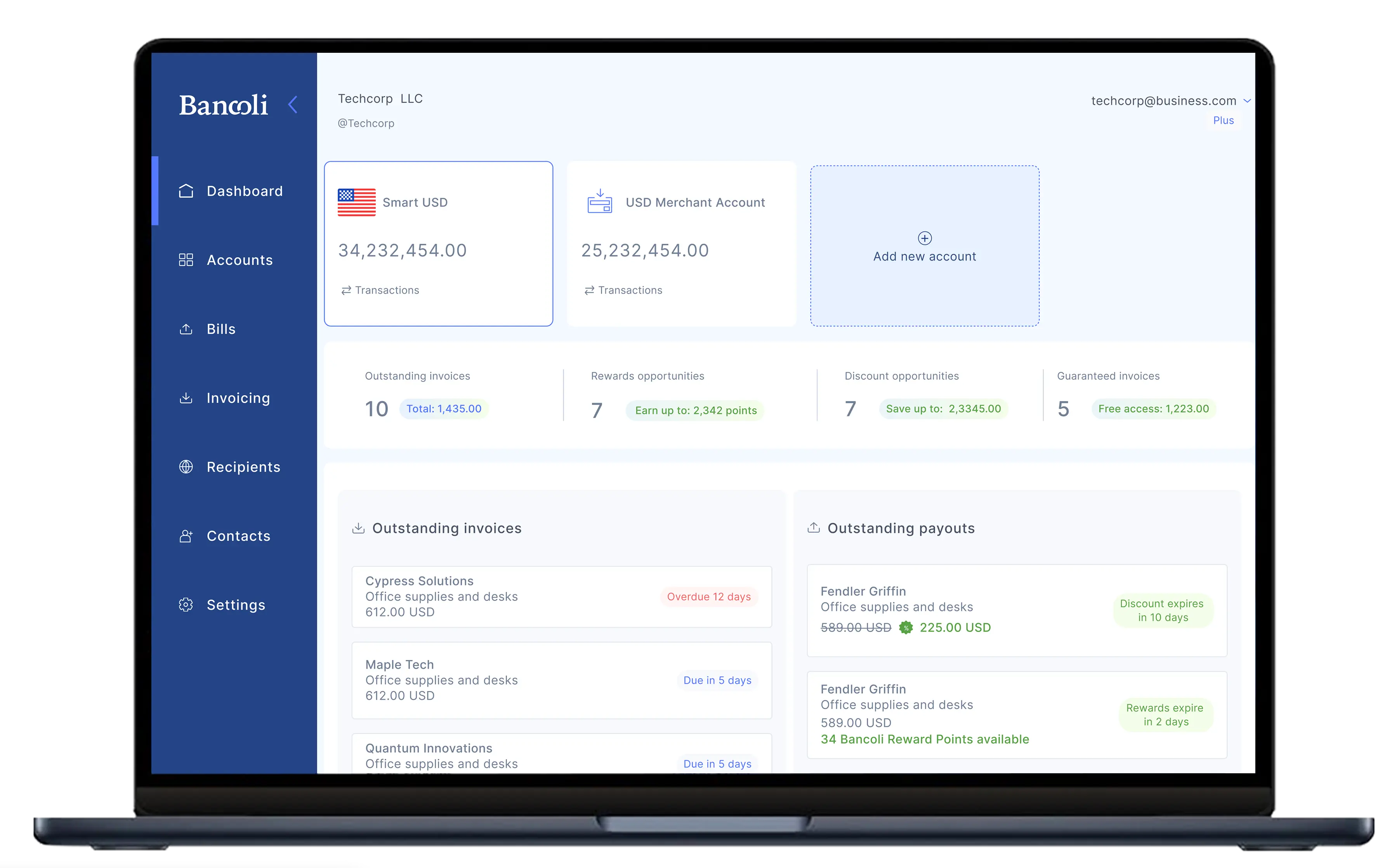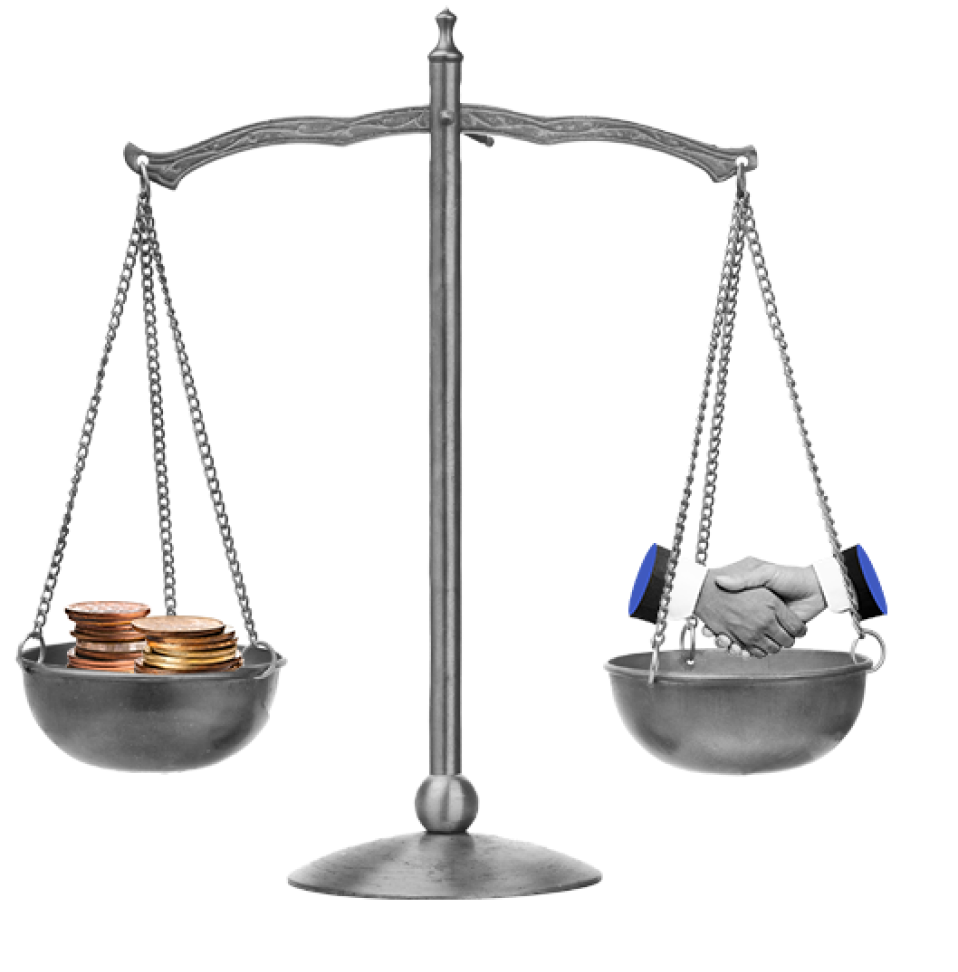Why Bancoli?
Why Bancoli?
We understand international supply chains.
Both Bancoli's AI (Eric) and the Bancoli platform were born out of our own needs throughout the years as we were making payments to our own international suppliers.
We've discovered that a place where both buyers and sellers have direct input can improve not only the financial outcomes for both parties but also the relationship between them.

B2B payment settlements
without Bancoli are seriously broken. Eric helps you avoid
becoming a statistic!
39% of invoices are paid late in the United States (Atradius).
48% of customers delay payments (Atradius).
52% of businesses are asked for extended terms (Atradius).
On average, most businesses offer customers 28-day credit terms but the average days sales outstanding is 67 (Atradius).
Businesses in the Americas lose 51.9% of the value of their B2B receivables that are not paid within 90 days of the due date (Atradius).
Invalid or incorrect purchase order information leads to 49% of disputes (CFO.com).
11% of customers never got the invoice (CFO.com).

27% of financial executives stated that customers didn't pay on time because they either didn't have the money or they were unable to contact the customer to resolve the issue (CFO.com).
According to Credit Today, only 20% of credit departments have formalized policies and of that small percentage:
- 19% said they update their manual every two years.
- 13% said every 3 years.
- 15% reported they only change when they need to.
- 12% said "other", which really makes you wonder then the last time they updated theirs was.
2013 industry report showed that in the digital advertising industry:
- 6% of invoices are paid in under 30 days.
- 94% of invoices take over 30 days to be paid.
- 62% of invoices take over 60 days to be paid.
50% of companies wait between 10 and 25 days for invoice approval (Paystream Advisors).
Approximately 17% of business customers do not adhere to supplier credit terms (Credit Research Foundation).
61% of late payments are due to compliance or administrative problems such as incorrect invoices or receiving the invoice too late to process payment on established credit terms (Credit Research Foundation).
25% of credit departments do not have adequate staff to manage their workload
(Credit Today).

47.93% of SMBs in the B2B sector rely on limited functionality in accounting or ERP systems to manage credit and collections (2014 study by e2b teknologies).
53% of midmarket B2B companies use spreadsheets to manage their accounts receivable (2014 study by e2b teknologies). And to make this even scarier…
94% of spreadsheets contained errors (Dartmouth College's Tuck School of Business).
Companies who rely on manual processes to manage collections spend 15% of their time prioritizing their activities, 15% of their time gathering information to make collection, and only 20% of their time communicating with their customers about payment (Paystream Advisors).
In contrast to the above statistics, companies who are using accounts receivable automation software spend only 6% of their time prioritizing their activities, only 6% of their time gathering information for collections calls, and 62% of their time communicating with their customers about payment (Paystream Advisors).
Only 4.13% of midmarket B2B companies use accounts receivable management solutions in their accounts receivable departments, which means 95.87% of midmarket B2Bs are working harder, not smarter when it comes to accounts receivable management (2014 study by e2b teknologies).
On average, companies write off 4% of accounts receivable as bad debt. For a 10 million dollar company, that means they are writing off $400,000 each year.
